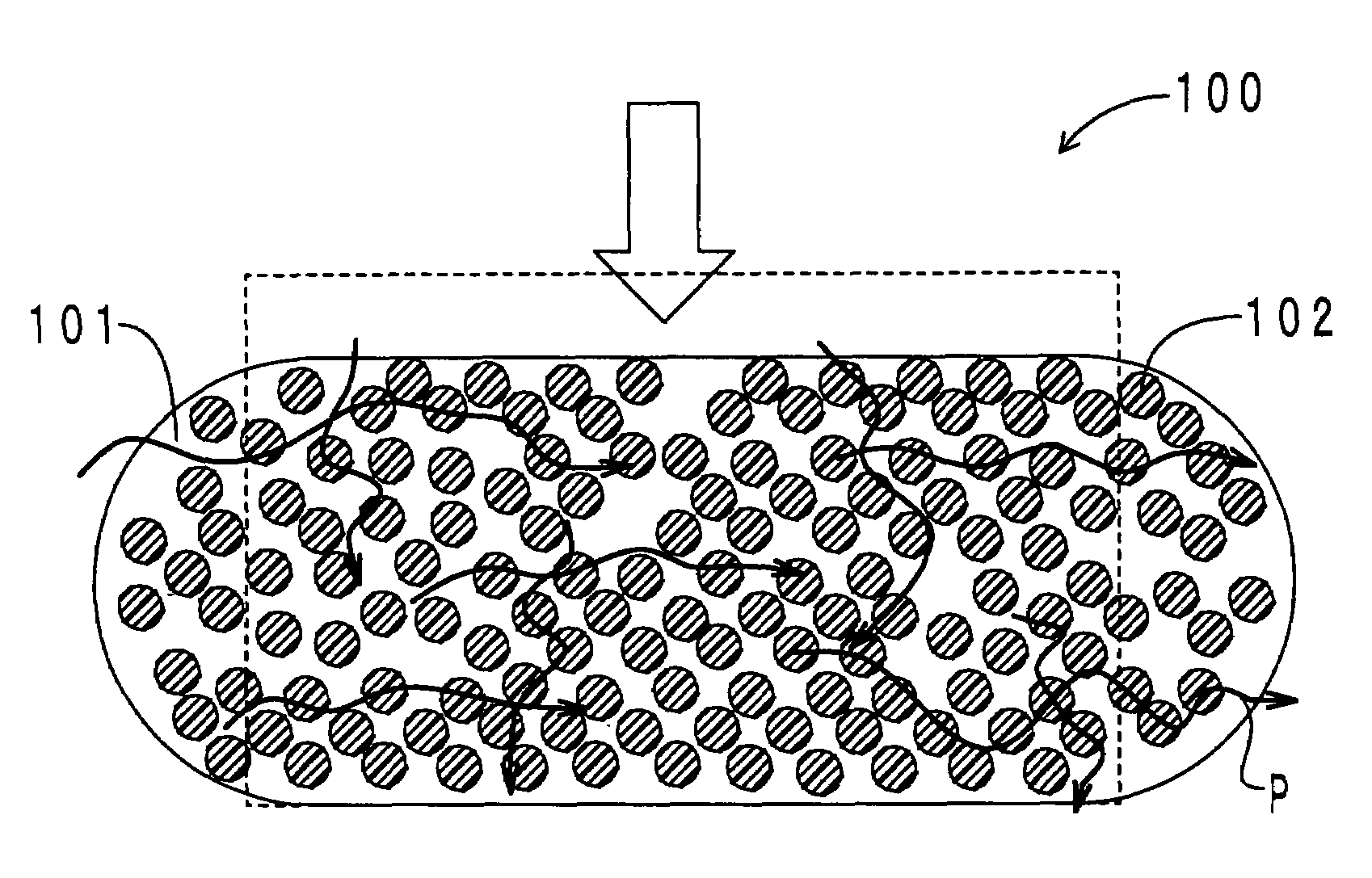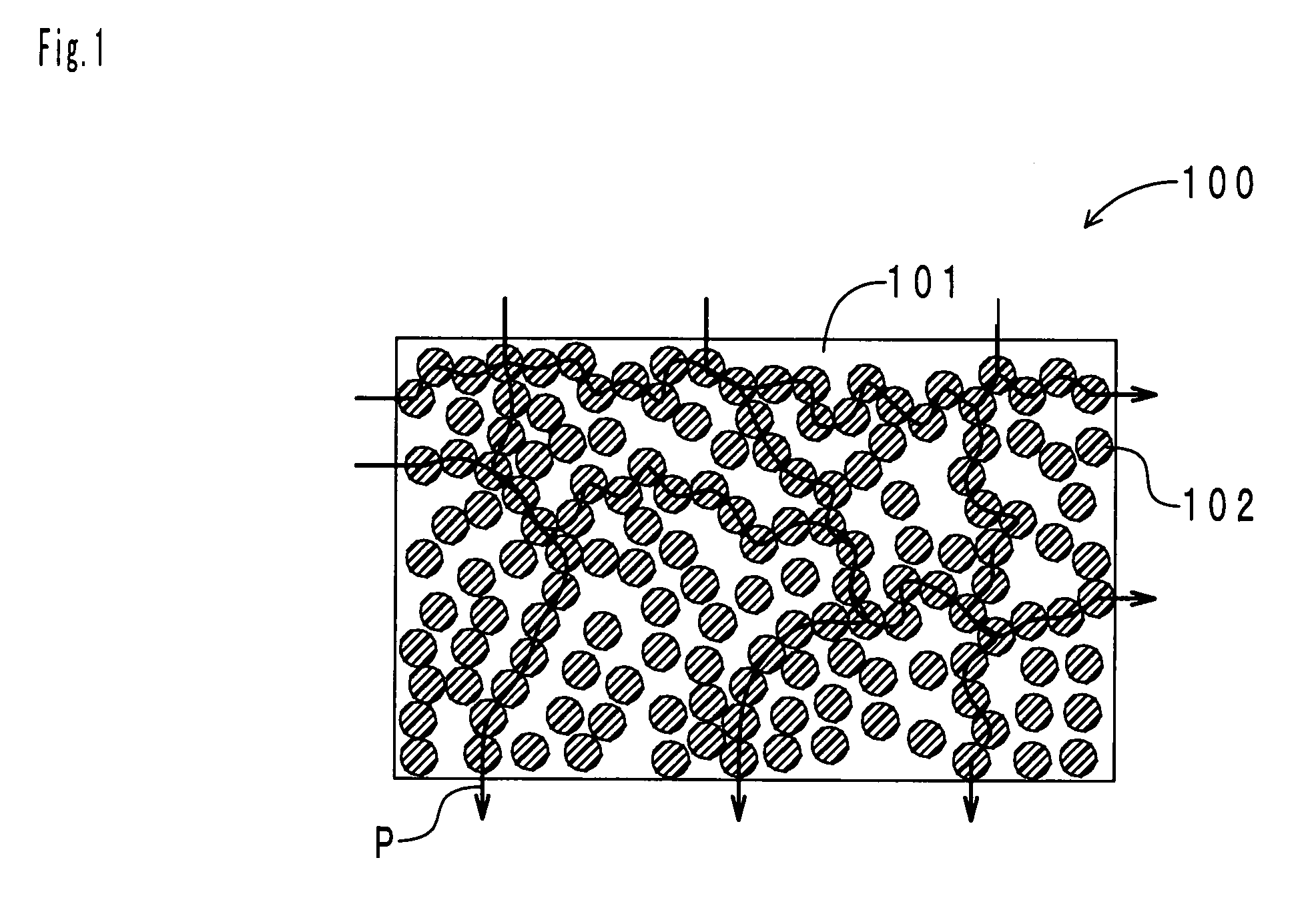Deformation sensor
a sensor and deformation technology, applied in the direction of material strength using steady bending force, force/torque/work measurement apparatus, instruments, etc., can solve the problems of low limited operable temperature range of the sensor, and high cost of the sensor. , to achieve the effect of excellent workability and high degree of freedom in shape design
- Summary
- Abstract
- Description
- Claims
- Application Information
AI Technical Summary
Benefits of technology
Problems solved by technology
Method used
Image
Examples
first embodiment
(1) First Embodiment
[0073]A constitution of the deformation sensor according to this embodiment is described below. FIG. 4 is a front view of the deformation sensor. FIG. 5 is a V-V cross sectional view of FIG. 4. In FIG. 5, for convenience of the description, a conductive wire is omitted. As shown in FIGS. 4 and 5, the deformation sensor 2 has an electrode film section 20, a main body of sensor 21, and a restraining film section 22.
[0074]The electrode film section 20 has a base material film 200 and a cover film 201. The base material film 200 is made of polyimide and has a band shape which extends to a right-left direction. The base material film 200 is fixed to a surface of a base material 900. A connector 23 is mounted to a right end of the base material film 200.
[0075]The cover film 201 is made of polyimide, and has a band shape which extends to a right-left direction. The cover film 201 covers the surface of the base material film 200. A long hole 201a which extends to a right...
second embodiment
(2) Second Embodiment
[0088]A different point of the deformation sensor in the second embodiment from the deformation sensor in the first embodiment is that the restraining film section is not arranged on the rear surface of the main body of sensor. Therefore, here, only the different point is described below.
[0089]FIG. 9 is a cross-section view when viewed from above the deformation sensor according to the second embodiment before crash. By the way, Portions corresponding to those in FIG. 7 are indicated as the same symbols. FIG. 10 is a cross-section view when viewed from above the deformation sensor in the second embodiment after crash. Portions corresponding to those in FIG. 8 are indicated as the same symbols.
[0090]As shown in FIGS. 9 and 10, the restraining film section 22 is not arranged on the surface (rear surface) of the main body of sensor 21 opposite to the base material film 200. When the object to crash O crashes against the base material 900 at a front side, the base m...
third embodiment
(3) Third Embodiment
[0092]A different point of the deformation sensor in the third embodiment from the deformation sensor in the first embodiment is that four electrodes are arranged on the main body of sensor. Therefore, here, only the different point is described below.
[0093]FIG. 11 shows a front view of the deformation sensor according to the third embodiment. In FIG. 11, for convenience of the description, the restraining film section is omitted. Portions corresponding to those in FIG. 4 are indicated as the same symbols. As shown in FIG. 11, four electrodes a to d are arranged on the main body of sensor 21 so as to be separated by predetermined intervals in the right-left direction. The electrodes a to d and the connector 23 are connected by conductive wires 24a to 24d, respectively. The main body of sensor 21 is divided into three zones 210, 211 and 212 by the electrodes a to d.
[0094]FIG. 12 is a pattern diagram of a circuit into which the deformation sensor of the third embod...
PUM
| Property | Measurement | Unit |
|---|---|---|
| saturation volume fraction | aaaaa | aaaaa |
| particle diameter | aaaaa | aaaaa |
| particle diameter | aaaaa | aaaaa |
Abstract
Description
Claims
Application Information
 Login to View More
Login to View More - R&D
- Intellectual Property
- Life Sciences
- Materials
- Tech Scout
- Unparalleled Data Quality
- Higher Quality Content
- 60% Fewer Hallucinations
Browse by: Latest US Patents, China's latest patents, Technical Efficacy Thesaurus, Application Domain, Technology Topic, Popular Technical Reports.
© 2025 PatSnap. All rights reserved.Legal|Privacy policy|Modern Slavery Act Transparency Statement|Sitemap|About US| Contact US: help@patsnap.com



